Fine Lines Blanket
Our Fine Lines Blanket is a lovely swath of seed stitch fabric, gorgeous in our 100% organic Cotton Pure On A Cone and interrupted only by crisp, little stripes of color.
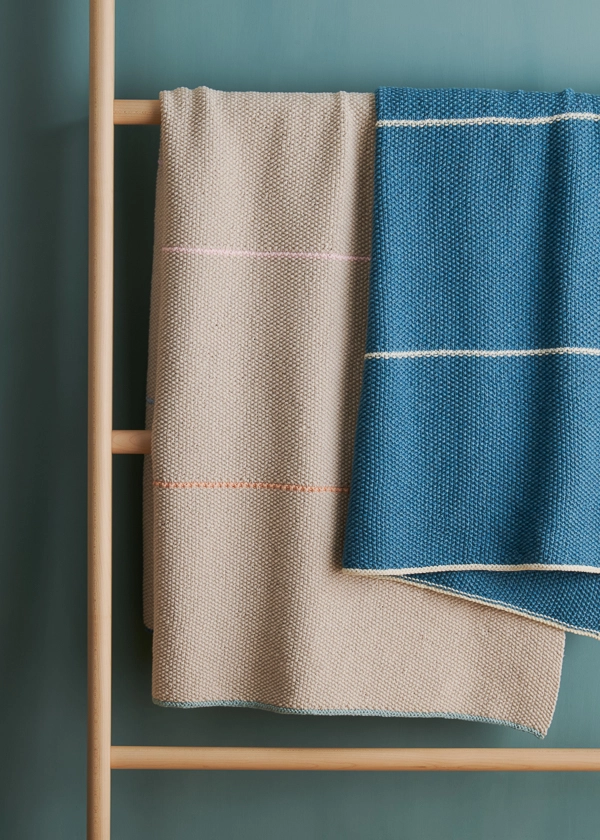
All knits and purls, this easy blanket walks the fine line between simple and interesting, with occasional garter rows to add variety and satisfying finish lines along the way… Always welcome in a large project!
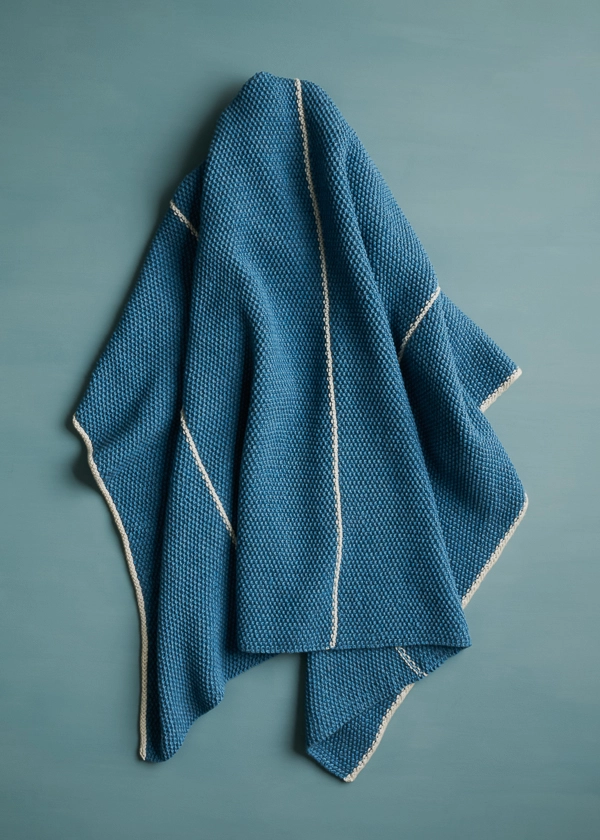
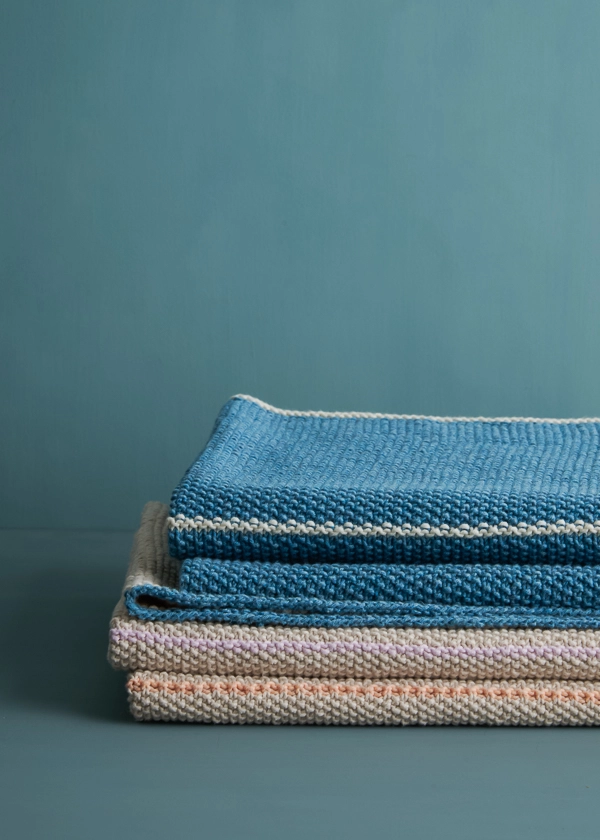
Our Cotton Pure On A Cone has more than 2500 yards (that’s ten skeins worth!), so you can knit the main color of this blanket without ever having to cut or rejoin your yarn. Translation: Many fewer ends to weave in!

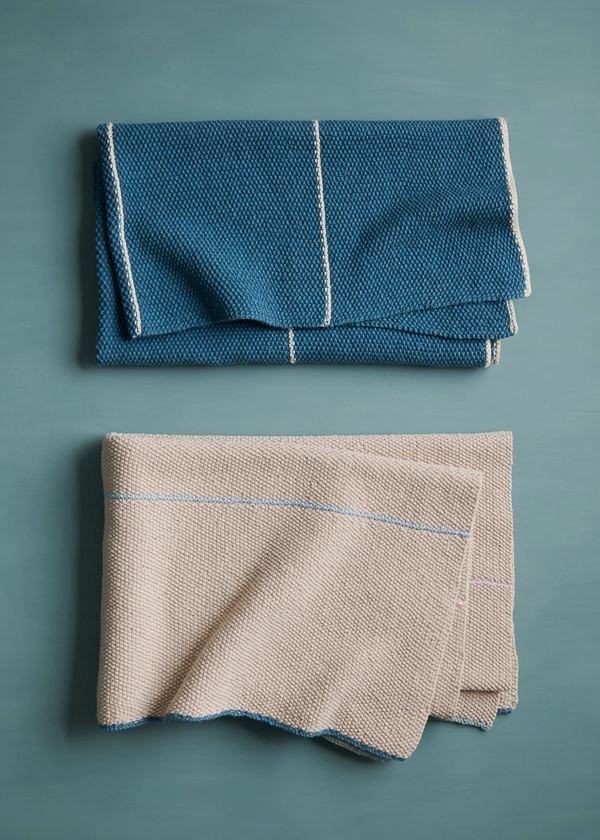
Cotton Pure On A Cone is 100% organically grown cotton with an unmercerized finish, making it soft, absorbent and pleasantly matte. It is also machine wash- and dryable!
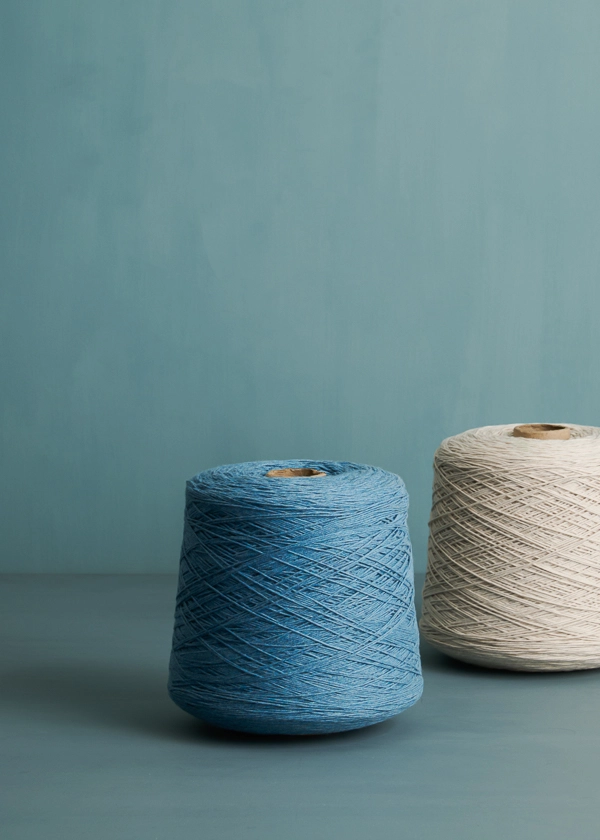
With three new colors, including Coastal Blue above, there are now twenty-five beautiful colors of both Cotton Pure On A Cone and Cotton Pure in skeins.
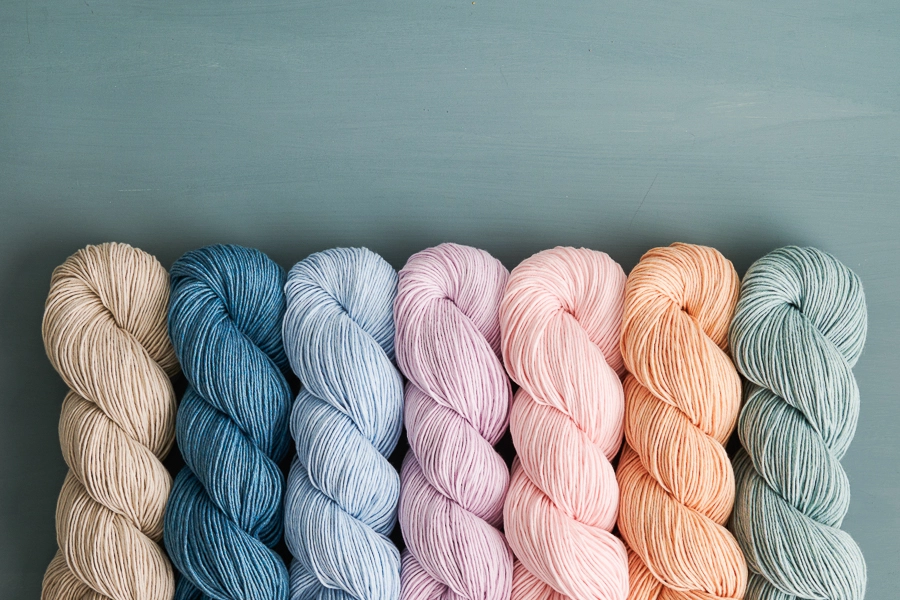
Pair a cone you love with your favorite line-up of contrast colors and cast on for the finest of fine lines!
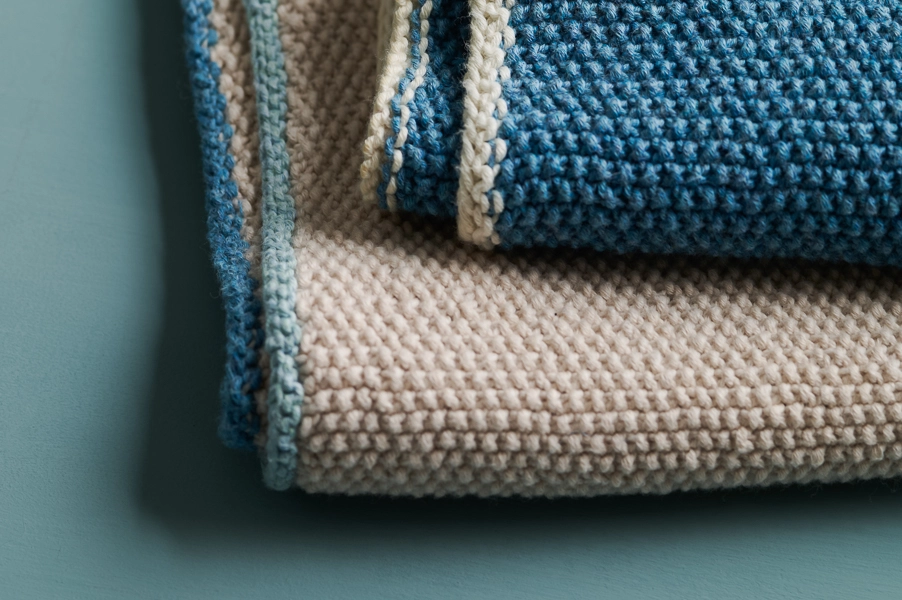
Designed by Purl Soho designer, Keith Foster. Click here to see even more of Keith’s work!
Share your progress and connect with the community by tagging your pics with #PurlSoho, #PurlSohoBusyHands, #PurlSohoFineLinesBlanket, and #PurlSohoCottonPure. We can’t wait to see what you make!
Materials
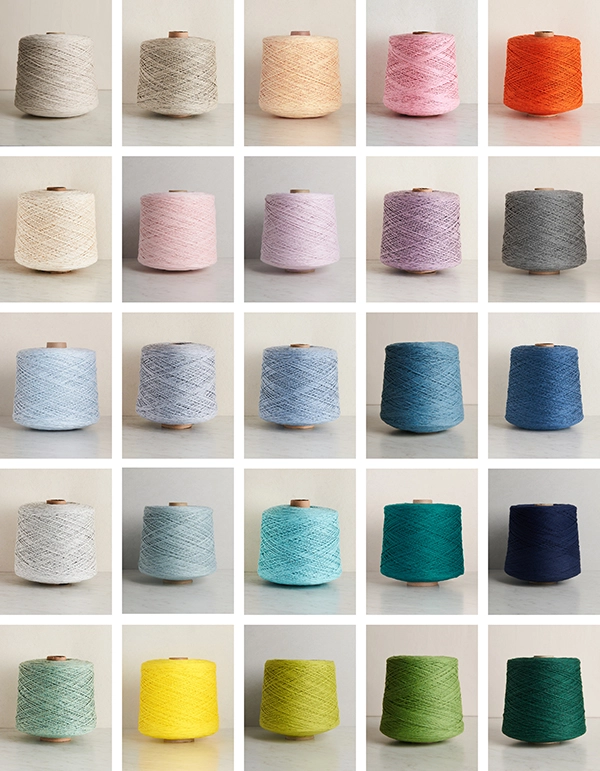
- Main Color (MC): 1 cone of Purl Soho’s Cotton Pure On A Cone, 100% organically grown cotton. Each cone is approximately 2,789 yards/ 1 kg; approximately 1340 (2530) total yards required. (Prefer skeins? You’ll need 5 [10] Cotton Pure skeins!)
- Contrast Color (CC): 1 skein of Purl Soho’s Cotton Pure, 100% organically grown cotton. Each skein is 279 yards/ 100 grams; approximately 75 (120) total yards required. We used six different Contrast Colors for our Throw sample. Each Contrast Stripe requires approximately 15 (20) yards.
- US 4 (3.5 mm), 32- or 40-inch circular needles, depending on size you are making
Here are the colors we used…
MC: Coastal Blue; CC: Heirloom White
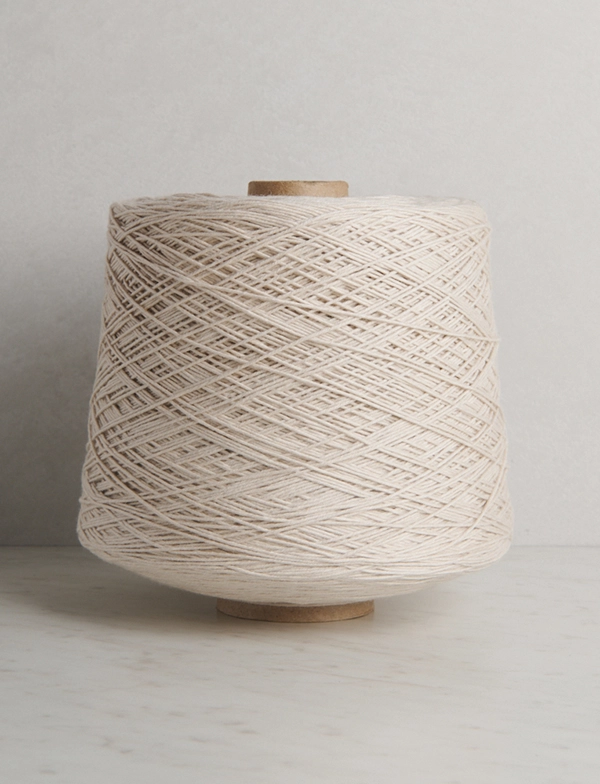
MC: Alabaster Cream; CCs: Coastal Blue, Moonflower Blue, Lavender Rose, Teacup Pink, Peach Peony, and Mineral Blue
GAUGE
22 stitches and 40 rows = 4 inches in seed stitch
SIZES
Crib (Throw)
Finished Dimensions: Approximately 30 inches wide x 37¼ inches long (40 inches wide x 56½ inches long)
SAMPLES: The Coastal Blue blanket is the Crib size, and the Alabaster Cream blanket is the Throw size.
NOTES
STITCH MULTIPLE
This pattern is worked over an odd number of stitches.
PATTERN
With Contrast Color (CC), cast on 165 (221) stitches. We used a basic Long Tail Cast On.
Set-Up Row (wrong side): Knit to end of row.
Cut CC and join Main Color (MC).
SEED STITCH BLOCK
Row 1 (right side): With MC, *k1, p1, repeat from * to last stitch, k1.
Repeat Row 1 until MC block measures approximately 9 (11) inches from CC row, ending with a wrong-side row.
Do not cut MC.
CONTRAST STRIPE
NOTE: If you are using multiple colors for your Contrast Stripes, change the CC for each stripe through remainder of pattern.
With right side facing you, join CC.
With CC, knit 2 rows even.
Cut CC.
CONTINUE
Repeat Seed Stitch Block and Contrast Stripe 3 (4) more times, but do not cut CC after last stripe.
Next Row (right side): With CC, bind off knitwise.
FINISHING
Weave in all ends and gently block as desired.
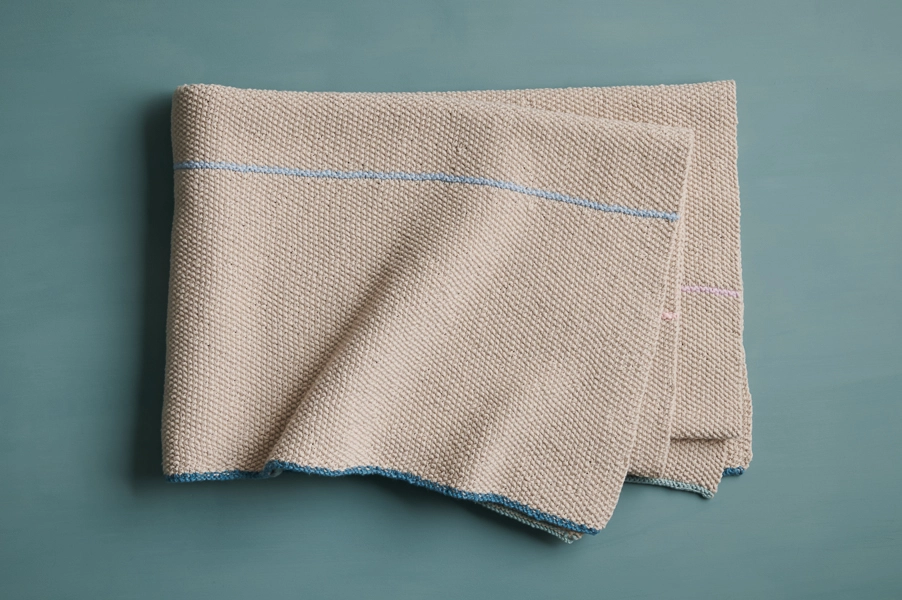
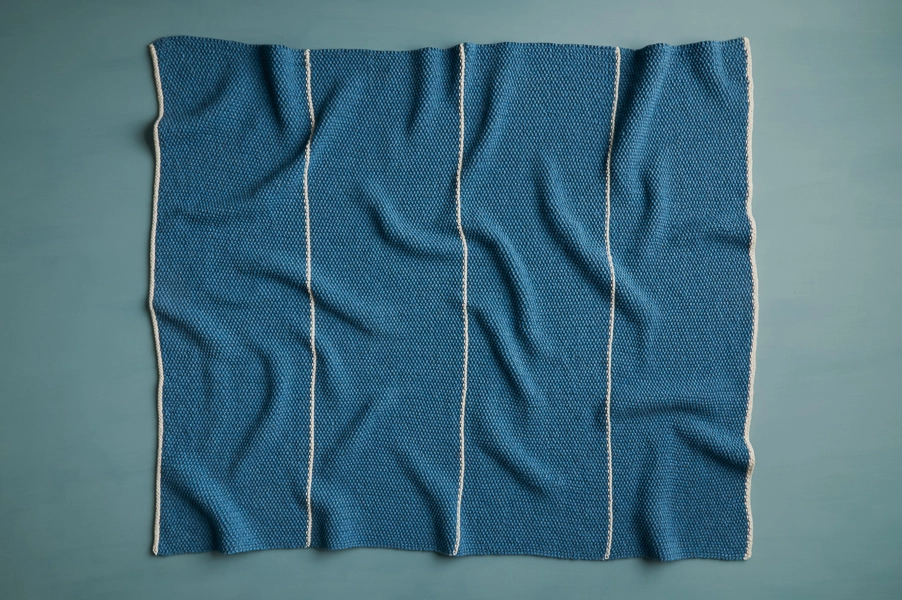

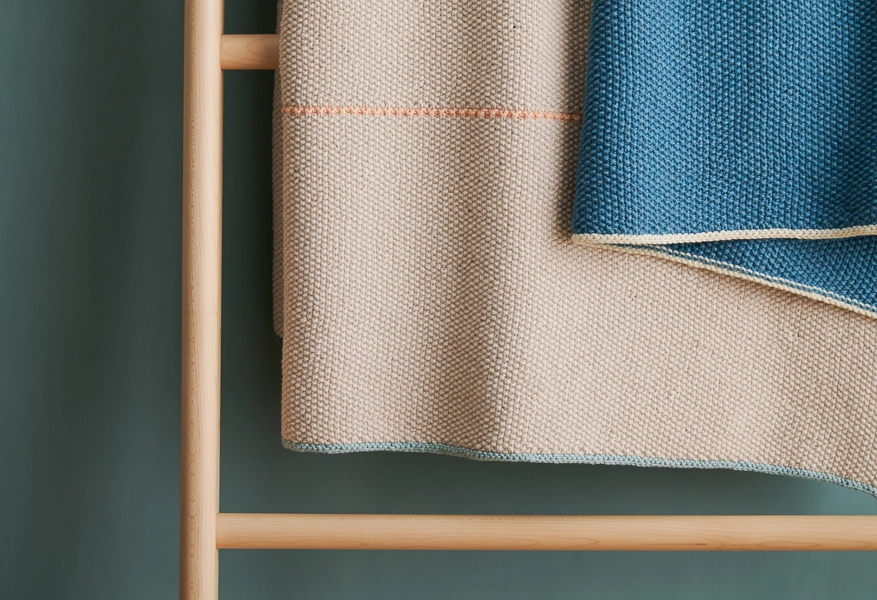
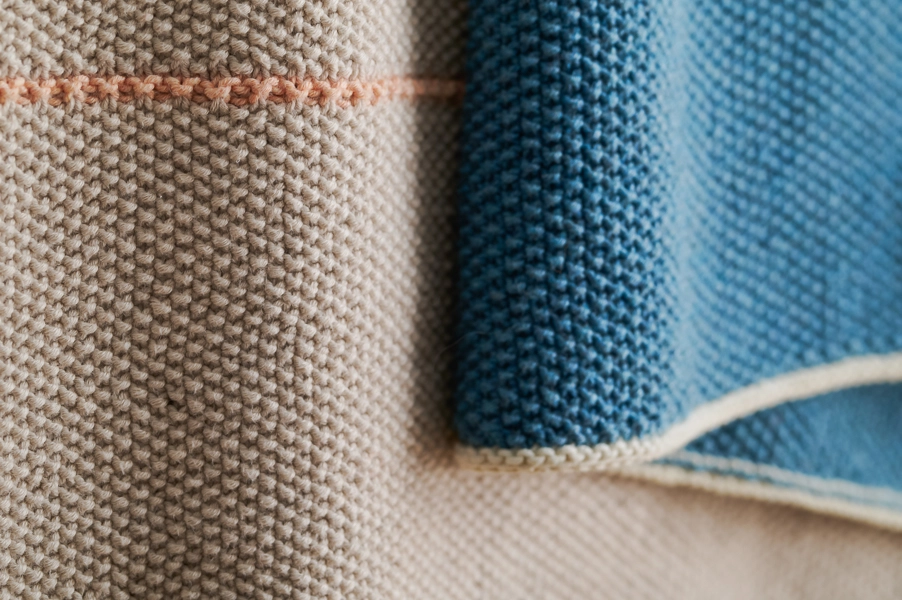
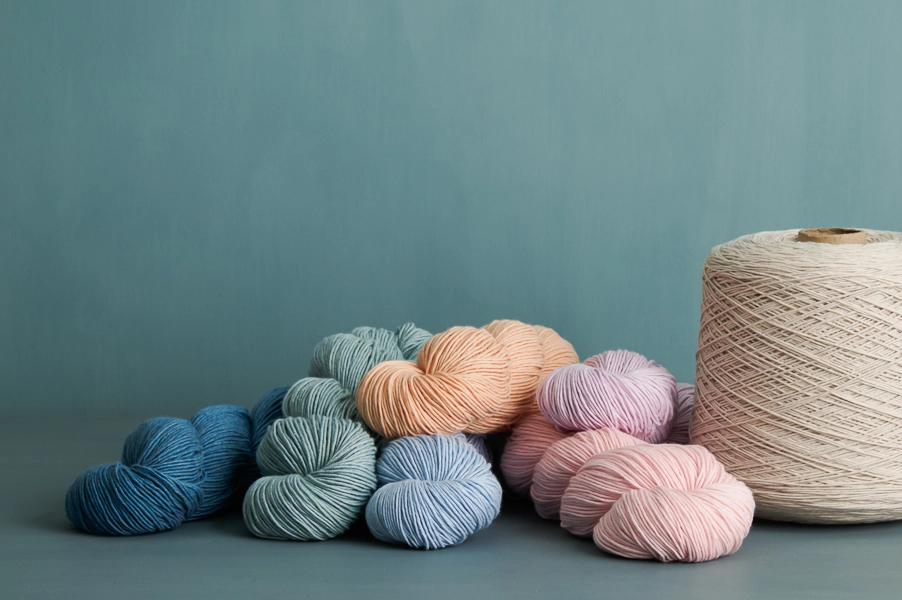
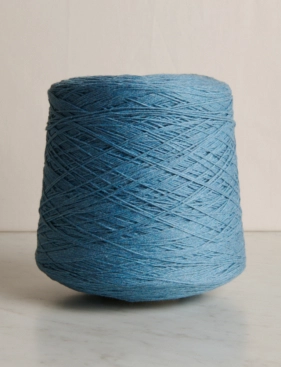
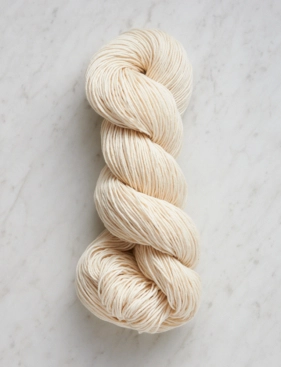
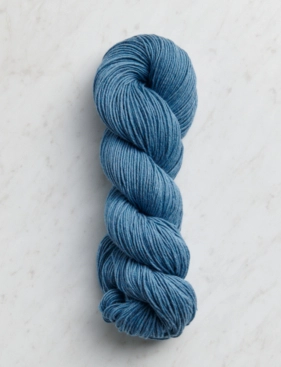
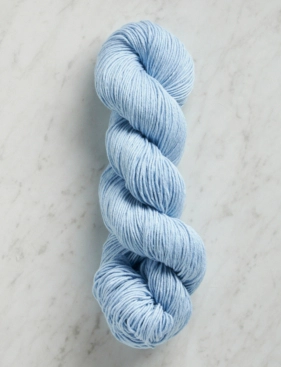
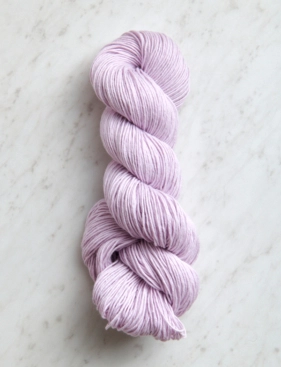
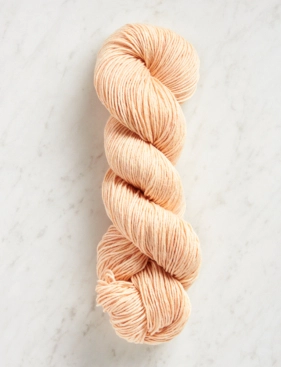
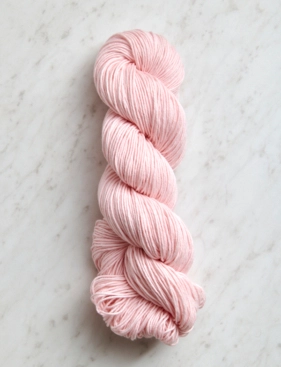
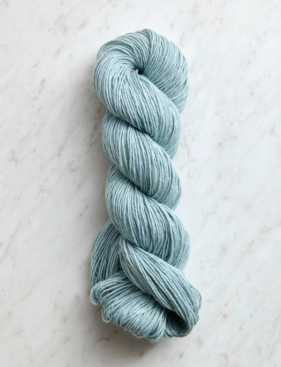


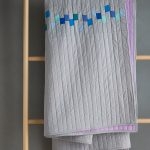
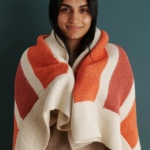
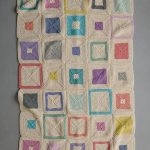

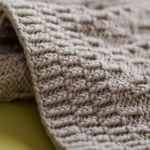
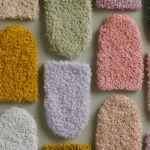
What yarn do you recommend to do this in a worsted? For the crib size how many would I cast on and what needle size would I use?
Thanks
Hi Ellen,
Thanks for your question! I’d recommend Tulip Cotton (https://www.purlsoho.com/tulip-cotton.html) and Campo (https://www.purlsoho.com/campo.html) as great worsted weight options for this blanket! These yarns are both machine washable, and Tulip Cotton can also be machine dried. If you’d like more options, including wool yarns, here’s our collection of worsted weight yarns here (https://www.purlsoho.com/yarn/knitting-crochet.html?yarn_stitches_per_inch_filter=971)!
To find the number of cast-on stitches for your project, I recommend casting on a swatch with the worsted weight yarn you’d like to use for this project and your preferred needle size. This way, you can find the number of stitches you’re knitting per inch. Then, you can multiply that number by the width of the blanket (which is 30″ for the crib size) and round to the nearest odd number to find your new cast-on number of stitches. It’s important that the cast-on number be odd since seed stitch is worked over an odd number of stitches.
I hope this helps, and let us know if you have any other questions!
All the best,
Cat
What is the finished size for the fine lines blanket based on this pattern?
Hi Angela,
The finished dimensions for the crib-sized Fine Lines Blanket is about 30 inches wide x 37¼ inches long and the finished dimensions for the throw size are 40 inches wide x 56½ inches long. I hope this helps!
All the best,
Cat
Hi- I had a similar question as Ellen above.
Though I’ve always wanted to knit with this cotton pure on a cone- I need a project at the moment to knit up quicker.
Between Tulip and Campo, which would produce the most similar texture to the Cotton Pure? And what size needle would you recommend?
Also, for each of those yarns, can you give me a similar color palette (for the white version)?
To knit the same size blankets in a different weight yarn, will I need the same yardage?
Thanks for the suggestions and help.
Hi Natalie,
I’d say that Tulip Cotton is more similar to Cotton Pure than Campo is since it’s also 100% cotton, while Campo is a blend of cotton and wool. We recommend needle sizes US 6 or 7 for Tulip Cotton. As for yardage, can you let me know if you’re interested in making the Crib or Throw size?
Here’s a color palette I came up with for Tulip Cotton to match the white version:
MC: Heirloom White
CCs: Ocean Blue, Blue Talc, Pale Iris, Fresh Peach, Icy Pink, Icecap Blue
Hope this helps you plan you project!
All the best,
Lili
I’m interested in making the crib size.
Additionally please give me the same info for using Campo, in case I choose to use that.
Thank you!
Hi Natalie,
For the Crib size in either Tulip Cotton or Campo, you’ll likely need 8 skeins of the main color and 1 skein of each of the contrast colors.
All the best,
Lili
(It occurred to me that knitting with Tulip Cotton on US 6 needles may not be considerable faster than the Cotton Pure with size 4….so I thought Campo might knit up significantly quicker.) 🙂
Would this look right knitted with all one color? Thank You
Hi Gail,
You can absolutely knit this blanket in just one color, but I’d recommend omitting the rows of garter stitch where the contrast colors would have been. Then, you’ll have a fully seed stitch blanket, which I think will look more cohesive as a design when worked in one color!
All the best,
Lili
Hi — this may be a “duh” question but if you aren’t cutting MC how do you neatly carry it past the two CC knit rows 🙂
Hi Jenny,
Thanks for reaching out! Since the distance between the MC sections is so small, the carried yarn shouldn’t look messy at all. You can just begin knitting with the MC again, and the carried yarn will just sit flush with the edge of the blanket. Hope this helps!
All the best,
Lili
Hi – i would like to make this a blanket for a double or queen bed. Can I just adjust the pattern to make a finished size of 54”x75”(dbl) or 70”x80” (queen) or would recommend another pattern?
Thanks
Hi Kim,
Thanks for reaching out! Yes, you can absolutely adjust this pattern to make a larger blanket. To do so, you would need to first change the number of stitches that you cast on.
To figure out your cast-on number, just multiply the number of stitches per inch (5.5, according to the gauge) by the width that you would like and cast on the nearest odd number of stitches. Then you can follow the pattern essentially as written! You may also want to either lengthen the MC sections, or add more of these sections, so that your blanket comes to your desired length as well as width.
I hope this helps!
All the best,
Lili
Hey there!
I’m getting ready to join CC color after doing the first block of MC. I see that I need to end on a wrong side row. With a reversible pattern like this, how do I tell which is the right/wrong side? Thanks!
Hi Emily,
Great question! It’s important to keep track of the right and wrong side in this pattern so that you always join the CCs on the same side, but it’s true that it’s hard to tell when you’ve been working in seed stitch. The trick is to look at the cast-on edge! If you’ve done a long tail cast-on, the right side of the cast-on edge should look like a series of gentle swoops of yarn, while the wrong side should look like a row of purl bumps all the way across. Once you’ve determined this, I’d recommend placing a removable stitch marker on the right side of the blanket. That way, you’ll always know which is the right side without having to check the cast-on or the CC stripes!
All the best,
Lili
Hi there,
I am hoping to start this pattern soon but have never done seed stitch before. Does every row begin with a knit stitch or does it change? I saw a video tutorial for seed stitch where it shows you do the opposite stitch. So if you finish row 1 with a knit stitch, you begin the next row with a purl stitch. Very confused, sorry.
Hi Marianne,
Thanks for reaching out! That has to do with the number of stitches you have on each row. This pattern has an odd stitch count, so it will always begin with the same stitch to create seed stitch. If you have an even stitch count though, you would need to alternate beginning with k1 and p1 for seed stitch. Hope this helps clarify things!
All the best,
Lili
Could you share how many hours you expect this to take an “intermediate skill” knitter to complete?
Hi Cara,
I’m afraid that it’s quite difficult to estimate how many hours a project will take, since every knitter knits at a different speed, regardless of skill level. But there is a useful way to test this out for your own knitting speed! First, time yourself knitting a small swatch in the main stitch pattern, which is seed stitch. Then, you can create a ratio between the time and the area of both the swatch and the full blanket and solve for the time it would take to make the entire thing!
Please let me know if you try this out and need any assistance with the calculations!
All the best,
Lili
Hi Purl Soho
Can you let me know please if this project is possible with 24in straight knitting needles please? If not, could you let me know what’s the maximum number of stitches that can be cast onto a 24in straight needle and the subsequent number of skeins I would need please?
Thanks so much!
Sharon
Hi Sharon,
I’m afraid that I would not advise knitting this blanket on straight needles! The width of the blanket is 30 inches (for the Crib size) or 40 inches (for the Throw size), which unfortunately won’t fit on standard straight needles (which are usually 12-16 inches long). If you use those, your stitches would be very much at risk of falling off the needles!
Typically, we recommend using circular needles for any project whose width exceeds the length of straight needles. That means you wouldn’t really be able to knit anything wider than about 12-16 inches on straight needles. Straight needles are great for scarves, but not very suitable for blankets, sadly! Please let me know if you’d still like a yardage estimate for this, even though it wouldn’t be wide enough for a blanket.
All the best,
Lili
Do you finish the blanket with 2 rows knit in contrast color and then bind off knit wise? Or, 1 row knit in contrast color and then bind off knitwise?
Hi Kim,
Thank you for writing in! That is a great question! You will want to end by knitting the last two rows in pattern and then bind off on the right side of your work! I hope this helps!
Happy knitting,
Gavriella
I’ve knitted the ‘fine line’ but am questioning if I did it correctly. By knitting every stitch in the CC is it normal for the previous row in MC to lose the seed stitch ‘look’? All stitch are uniform. After returning to the MC there are little arches of the CC. I’m pretty sure I’ve followed correctly but mine does not look like photographs. Many thanks
Hi Margaret,
Thank you for writing in! That is correct, your stitches will look like all V stitches once you knit the first contrasting color row. Sometimes I find it helpful to knit a small swatch in pattern to give me an idea of how a larger project will work up. This allows you to get more familiar with the stitches before moving on. I hope this helps but please let us know if you have any questions!
Happy knitting,
Gavriella
hi Purlsoho, would you recommend using a selvege finishing for the first and last stitch of each row for neater edges?
thanks so much!
Hi Sharon,
Thanks for writing in! We designed this blanket with bumpy edges to match the seed stitch pattern all the way through. But if you prefer a slipped stitch edge, then you can absolutely do that too! To get that effect, all you’ll have to do is slip the first stitch of every row. Hope this helps!
All the best,
Lili
I’d love to make this as a throw in Tulip Cotton, using a MC and one CC. How many skeins of each would I need?
Hi Stephanie,
Thank you for writing in. If using the same gauge as the pattern, you will need 20 skeins for your MC and 1 skein for your CC! I hope this helps!
Happy knitting,
Gavriella
What is the neatest way to join the CC to the MC please? Thanks!
Hi Sharon,
Thank you for writing in! You can join a new color to your knitting by adding it at the contrast color row. You can also check out our photo tutorial here on how this can be done. Although the example is done in the middle of your work, the steps are the same for beginning a new row. I hope this helps!
Happy knitting,
Gavriella